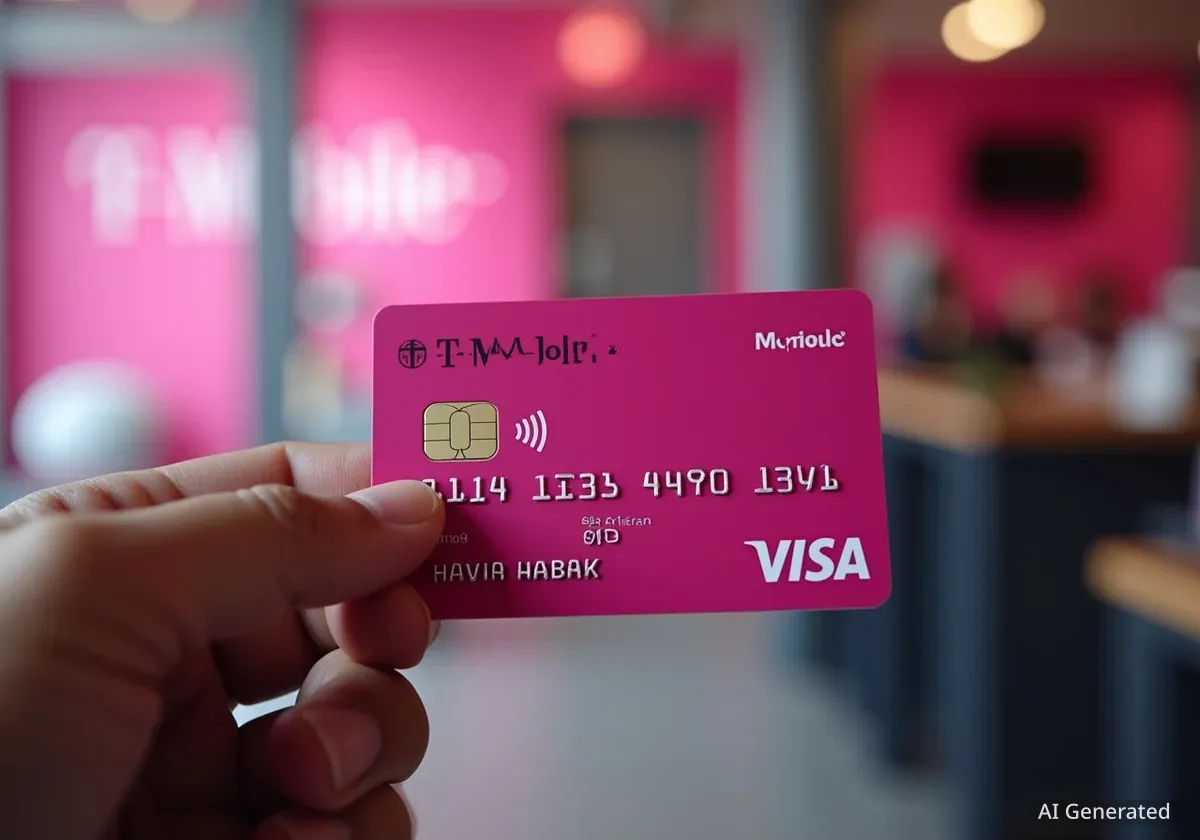British fintech firm Revolut is launching its services in India, aiming to revolutionize the country's cross-border payment landscape. The company identifies a significant gap in this sector, estimating that Indians spend approximately $30 billion overseas annually and incur about $600 million in bank fees for these transactions.
Revolut seeks to challenge traditional banking methods and existing fintech solutions by offering a more cost-effective and integrated platform for international and domestic financial services.
Key Takeaways
- Revolut is entering the Indian market to address high fees in cross-border payments.
- The company estimates Indians lose $600 million annually in bank charges for overseas spending.
- Revolut has secured necessary licenses, including a PPI license from the Reserve Bank of India.
- It targets 150 million 'globally aspiring' Indians and aims for 20 million users by 2030.
- Revolut will offer multi-currency cards, UPI support, and budgeting tools.
Addressing High Costs in International Transactions
Paroma Chatterjee, CEO of Revolut India, highlighted the substantial costs associated with traditional cross-border payments. She described these fees as "criminal," emphasizing how banks have historically dominated this service.
"It has been the preserve of banks. You go to your bank to take currency, foreign exchange out from your bank, or you take a travel card that is issued by your bank when you’re traveling overseas… there have been humongous charges which have been levied on this," Chatterjee stated.
Revolut's entry aims to disrupt this model by offering a more transparent and affordable alternative for Indian consumers engaging in international transactions.
Key Statistic
Indians spend an estimated $30 billion overseas each year, losing around $600 million in bank charges.
Strategic Market Entry and Regulatory Milestones
Revolut has been preparing for its India launch since 2021. The London-headquartered fintech has undertaken strategic steps to ensure regulatory compliance and market readiness.
In 2022, Revolut acquired Arvog Forex. This acquisition was crucial for obtaining a license to offer remittance and multi-currency account services within India. This move paved the way for broader service offerings.
Further strengthening its position, Revolut secured a prepaid payment instrument (PPI) license from the Reserve Bank of India in April this year. This PPI license allows the company to issue prepaid cards, facilitate digital wallets, and integrate with India's government-backed Unified Payments Interface (UPI).
Understanding PPI License
A Prepaid Payment Instrument (PPI) license from the Reserve Bank of India allows companies to issue prepaid cards and digital wallets. This is crucial for fintechs to operate digital payment services and integrate with platforms like UPI, expanding their reach and functionality in the Indian market.
Target Audience and Growth Projections
Revolut is targeting a specific demographic in India: more than 150 million "globally aspiring, digitally native" individuals aged between 25 and 45. This segment is seen as highly receptive to innovative financial solutions.
The company has ambitious growth plans, aiming to onboard approximately 20 million users by 2030. Additionally, it projects processing at least $7 billion worth of transactions from these users.
Chatterjee emphasized that the regulatory approvals, particularly the PPI license, enable Revolut to offer a distinct customer experience compared to competitors relying solely on bank partnerships. "We can deliver the kind of customer experience that we want to deliver," she noted.
Product Offerings and Customer Experience
Revolut's Indian product suite is designed to cater to diverse financial needs. Key offerings include:
- A prepaid wallet with full UPI support.
- Revolut's own branded UPI handles.
- A domestic Visa card for local transactions.
- An international multi-currency Visa card for overseas spending.
Beyond these core services, Revolut also plans to introduce accounts for kids and teens, linked to their parents' profiles. This aims to foster financial literacy from a young age. The platform will also feature a subscription-based model, alongside robust budgeting and analytics tools. These tools will provide users with detailed insights into their spending habits, promoting better financial management.
The startup holds explicit regulatory permissions for both domestic and international payments and transfers. It also has authorization to facilitate same-day remittances from India through a local banking partner, enhancing the speed and efficiency of international money transfers.
Commitment to Full KYC and User Engagement
Unlike many Indian fintech players that employ minimum Know Your Customer (KYC) checks for quick onboarding of low-value transactions, Revolut will exclusively offer full-KYC wallets. This means new users will undergo a more detailed verification process, including Aadhaar and video verification.
The fintech will also cross-reference new users against global sanctions lists, such as those maintained by the Office of Foreign Assets Control (OFAC) and the United Nations. This stringent approach aims to attract "high-intent customers" who are genuinely interested in using the product extensively.
"Somebody would do that only if they’re interested in using the product. So, this full KYC customer onboarded is going to be my customer metric," Chatterjee explained. She added, "In a country like India, once you list yourself on the App Store, sheer curiosity drives downloads. That’s not our metric of success."
Revolut's success in India will be measured by the depth of user engagement and profitability, rather than just raw user numbers. Chatterjee highlighted Revolut's global performance as a benchmark.
Global Performance Indicator
Revolut has 65 million customers across 39 countries, processing over $4 billion in transactions and generating more than $1 billion in profit. Over 25 million customers are active monthly.
This global valuation, which recently increased from $45 billion to $75 billion following a secondary share sale, underscores the company's focus on active, engaged users.
Launch Timeline and Future Prospects
Revolut already has a waitlist of over 350,000 individuals in India. The company plans to onboard these users by the end of the year before making the app available to new registrations. The exact launch timeline will depend on the speed of clearing this waitlist and the completion of KYC and anti-money laundering (AML) checks by customers.
Revolut is also exploring partnerships with other payment networks beyond Visa, including India's government-backed RuPay. This strategy aims to provide customers with a wider choice of network options.
The company has invested $45 million in India to initiate its operations and localize its entire technology infrastructure. This localization ensures compliance with India's data sovereignty regulations. Further investments are planned as operations scale up.
Notably, India is already home to Revolut's largest workforce globally, with approximately 3,500 employees. This figure surpasses its workforce in its home market, the U.K. Many of these employees contribute to products and features for markets outside India, demonstrating the country's strategic importance to Revolut's global operations.
Competitive Landscape in India
Despite Revolut's significant plans, the Indian market presents a competitive environment. While traditional banks dominate the foreign exchange sector, several fintech players are already active in India's cross-border and remittance markets. These include companies such as Niyo, Scapia, Fi, and BookMyForex. Revolut will need to leverage its unique offerings and global expertise to carve out a substantial market share amidst these established players.





